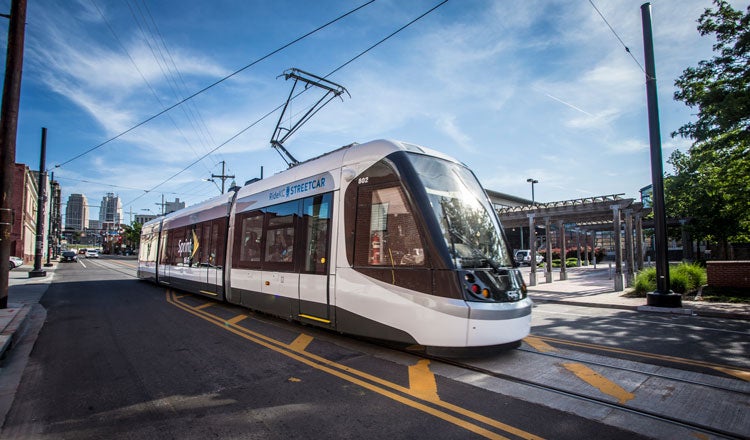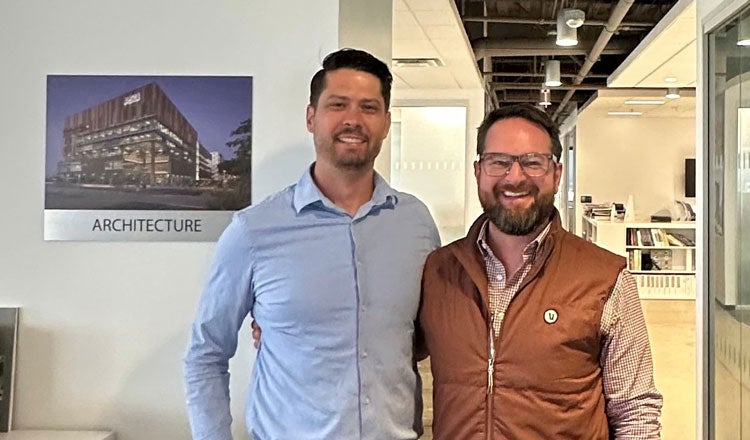
Andrew Elmer on Growing HDR’s Sports & Recreation Practice from Kansas City
Kansas City is known for many things, including smoky, slow-cooked barbecue, deep jazz roots, and its status as the “City of Fountains,” boasting more water displays than anywhere outside of Rome. But beyond the burnt ends and beautiful boulevards, it’s also home to our growing sports and recreation design practice. Now in his second year as director of sports and recreation architecture, Andrew Elmer reflects on the practice’s momentum, his approach to team building, and how technology and design can work together to foster meaningful connection.
A Bigger Network, A Broader Impact
Q. It's been over a year since you joined HDR. In what ways has your experience differed from what you initially expected?
A. Two things stand out: the people and the scale. I came from firms with a few hundred people at most. Our depth and connectivity have truly surprised me. That kind of collaboration — national expertise and local insight — is powerful. The second surprise is the breadth of our in-house expertise. We don’t need 12 different subconsultants to deliver a project. Structural, mechanical, electrical and civil engineering are all under one roof, along with specialized services like experiential design and acoustics. The only outside consultants we bring in are for food and beverage service or audio & visual design, and that’s intentional. Operating as an integrated team leads to more aligned, efficient and ultimately better outcomes for our clients.
Global Talent, Local Collaboration
Q. You mentioned how our depth and connectivity exceeded your expectations. Was there a specific moment when that potential really came to life for you?
A: Absolutely. One early example was connecting with Jeremy Graham, who leads computational design for our data-driven design team in Australia. He’s worked on sports facility projects and is now helping us develop proprietary, data-driven design software. He’s just one of many people I’ve met across HDR with deep experience in sports and recreation. I’ve connected with more than two dozen people who bring direct knowledge to our practice. Collaborating across time zones and disciplines within the same firm is when it clicked for me: this is what it means to be part of a global team.

Visualizing Smarter Decisions
Q: Can you speak to some of the advantages clients gain from having data-driven design tools during planning and design?
A: From the beginning, we’ve focused on using data to make complex decision-making more intuitive. Rather than sharing programs or layouts in spreadsheets, our data-driven design team uses 3D tools that allow clients to see the impact of decisions in real time. It’s especially useful when paired with budget data. You can instantly know if you’re over your program or where you might have room to expand. Visualizing those trade-offs leads to faster, smarter decisions and more efficient designs.
Entrepreneurial Energy Meets Community Pride in Kansas City
Q: Kansas City is the hub for sports and recreation design in the U.S. What makes it such a unique and exciting place for this kind of work?
A: Kansas City has an entrepreneurial energy and a communal spirit that drives design innovation. The specialized sports marketplace here grew out of that entrepreneurial mindset. People moved between firms, brought new ideas and built a collaborative design culture. It’s competitive, but in a healthy way that pushes everyone to do their best work. Kansas City feels like a big, small town. People care deeply about the arts, their neighborhoods, education and sports. We show up for our pro and college teams and for causes like the Big Slick benefit for Children’s Mercy, which we are proud to support. Ultimately, it’s the people who make Kansas City special. There’s a shared pride here, which shows up in the work.
Setting Trends with Urban and Suburban Revitalization
Q: What trends do you see budding from Kansas City that have started influencing other markets?
A: Kansas City is setting a national example by revitalizing both its downtown and suburban areas in unique ways. Take the Kansas City Streetcar, for instance, which was planned and delivered in part by HDR and reconnected key neighborhoods. That investment helped transform a vehicle-centric downtown into a vibrant entertainment district, home to venues like the T-Mobile Center and the Power & Light District. What’s notable is that we did it without a pro sports anchor. In other cities, development often hinges on a major league stadium. Kansas City took a different approach. We’re also seeing suburban revitalizations, like Children’s Mercy Park. It’s an urban-style soccer stadium in a suburban setting (which I enjoyed working on in a previous role), surrounded by an entertainment district. That’s forward-thinking planning — creating gathering places where people already live.

Beyond Efficiency: Using Tech to Make Space for What Matters
Q: As venues become more technologically advanced, how can thoughtful design and innovation work together to foster meaningful interaction?
A: Our job as designers is to go beyond the fundamentals. These spaces aren’t just about scanning in or finding your seat. They’re about engagement and community. We aim to create environments that help people escape their daily routines and connect. That’s where smart technology comes in. Take frictionless food and beverage services. If someone can grab what they need in under a minute, that’s 10-15 minutes saved and time they can now spend with friends or family. So yes, we design for efficiency, but the real goal is to make room for more intentional, meaningful experiences. Technology, when applied thoughtfully, helps people connect. It’s not isolating: it’s enabling.
Defining What Success Looks Like
Q: Can you share a few standout moments from your first year — things that made you feel like you were on the right track?
A: One of the biggest was developing our guiding principles. These are the foundations for how we operate and grow. The first is simple: you win with people. We cheer each other on, build each other up and take on challenges together. We’re also intentional about networking, supporting emerging professionals and delivering top-tier service. The second is data-driven design. The third is technical excellence. We want our drawings, specs and details to be the best in the industry. I’m proud that we created these principles as a team. That kind of vision-setting is the hard part, and we did it collectively.
As Coach John Wooden said, “Never mistake activity for achievement.” We’ve had productive activity. That’s what’s fueling our growth. Yes, we’ve won work, but true success means scalability. Whether it’s a small rec center or a 150-acre mixed-use district anchored by a sports venue, we want to deliver the right solution, build the right team and serve our clients well.
A Team Built for Growth
Q: So, what’s your team looking like these days?
A: We’ve brought on four new team members in the past year, and we’re continuing to grow. Mark Olsen has been with us the longest, joining as a project principal in April 2024. Alese Van Holland came on board in Omaha as a senior interior designer. Da Li joined us as a design architect in July 2024. And we welcomed Tim Baron, an associate principal and business development lead in Phoenix, this spring. So, we’re not just expanding in Kansas City, we’re building a strong, interconnected team for sports and recreation architecture.

As our sports and recreation practice continues to grow from its Kansas City roots, Andrew and his team are focused on more than just buildings: they’re designing experiences grounded in connection and community. Backed by guiding principles, a strong team and a commitment to design excellence, the practice is poised to shape environments that inspire and unite.



